Introduction
Sea glass, often referred to as “mermaid’s tears,” is a natural treasure found along shorelines worldwide. These smooth, frosted pieces of glass are the result of decades of oceanic tumbling, where discarded glass objects are broken down and polished by the relentless motion of waves.
What begins as industrial or domestic waste transforms into beautiful, jewel-like fragments that captivate collectors and beachcombers alike. With its vibrant colors and unique shapes, sea glass carries a rich history, offering glimpses into the past lives of bottles, jars, and other glass objects.
California’s coastline is a haven for sea glass enthusiasts. Stretching over 800 miles, the state boasts diverse beaches shaped by both natural forces and human activity. Its shorelines range from rocky coves to sandy expanses, each with its own story to tell.
Many of California’s sea glass beaches have historical ties to industrial dumping grounds or maritime trade routes, making them especially rich in these oceanic gems. The interplay between Pacific Ocean currents, coastal erosion, and historical circumstances has created some of the most remarkable sea glass beaches in the world.
This article explores the top 10 sea glass beaches in California, highlighting their unique features, historical significance, and practical tips for visitors. Whether you’re an avid collector or simply someone who enjoys the beauty of nature’s artistry, these beaches offer a perfect blend of adventure and discovery.
From Mendocino County’s famous Glass Beach to hidden gems like Moss Beach near Half Moon Bay, California’s coastline promises an unforgettable experience for sea glass hunters.
What is Sea Glass?
Sea glass is much more than just broken shards of glass; it’s a testament to the transformative power of nature. Originating from discarded bottles, jars, and other glass objects, these fragments undergo a remarkable journey. Over time—often decades—waves and sand polish the sharp edges into smooth, frosted pieces. The process involves constant tumbling in saltwater and abrasion against sand and rocks, giving sea glass its distinctive texture and matte appearance.
The most common colors of sea glass are green (from beer bottles), brown (from soda or medicine bottles), and white (from clear glass containers).
However, rare colors like cobalt blue (from old medicine or Noxzema jars), lavender (caused by prolonged sun exposure altering manganese-infused glass), and red (often from automotive tail lights or decorative items) are highly prized by collectors. Even rarer is “fire glass,” which features unique patterns created by molten glass fusing together during its initial production.
Historically, many sea glass beaches were former dumping grounds where communities discarded household waste directly into the ocean. Over time, this practice ceased due to environmental concerns, but remnants from these sites remain scattered along the coastline. Fort Bragg’s Glass Beach in Mendocino County is one such example—a place where industrial waste has been transformed into a stunning natural attraction.
Why California is a Sea Glass Haven
California’s coastline offers ideal conditions for sea glass formation due to its unique combination of geography, history, and oceanic activity. The state’s long shoreline provides ample opportunities for discarded glass to be swept into the ocean and tumbled by waves over time. Additionally, California’s history of industrial activity—particularly in coastal towns—has contributed significantly to the abundance of sea glass.
Ocean currents play a crucial role in shaping California’s sea glass beaches. The Pacific Ocean’s strong currents and frequent storms churn up hidden treasures buried beneath sand or trapped among rocks. These natural forces ensure that new pieces of sea glass are constantly being deposited along the shoreline.
Certain locations stand out due to their historical significance or unique contributions to sea glass formation. For instance, Fort Bragg’s Glass Beach owes its colorful abundance to years of waste dumping by local residents in the early 20th century. Similarly, Davenport Beach near Santa Cruz became a hotspot for multicolored sea glass after a flood washed waste from Lundberg Studios—a renowned art-glass manufacturer—into the ocean during the 1970s.
Top 10 Sea Glass Beaches in California
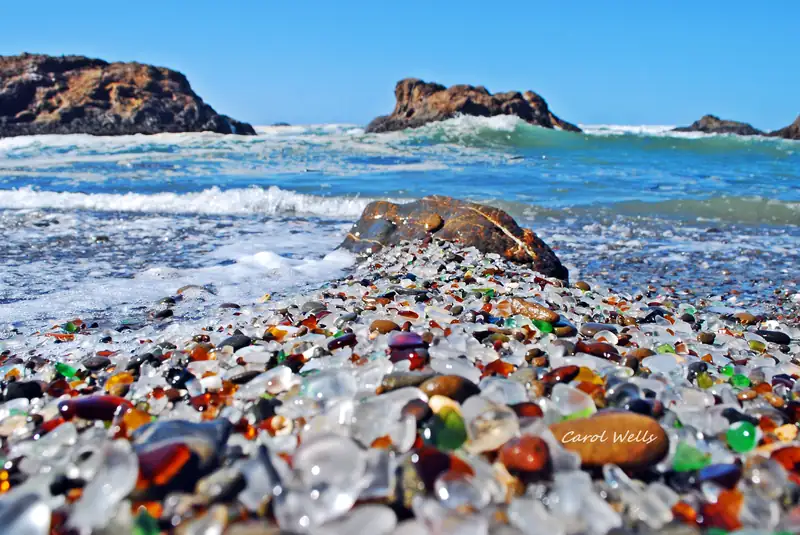
1. Fort Bragg Glass Beach
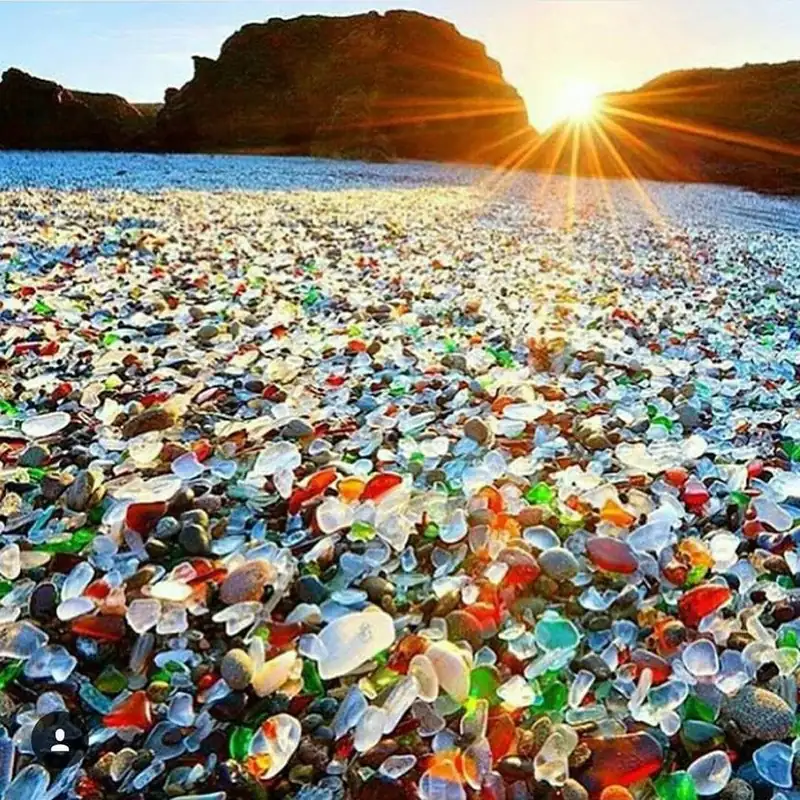
Located in Mendocino County along Northern California’s rugged coastline, Fort Bragg’s Glass Beach is perhaps the most famous sea glass destination in the world. Once a dumpsite for household trash during the early 1900s, this beach has been transformed into a treasure trove of colorful sea glass over decades of oceanic polishing. Visitors can find an array of hues here—greens, whites, browns, and even rare fire glass.
The nearby Sea Glass Museum showcases over 3,000 unique pieces collected from around the world and offers insight into the history and science behind these frosted gems. While collecting sea glass here is discouraged due to preservation efforts aimed at maintaining this natural wonder for future generations, visitors can still enjoy beachcombing during low tide or after storms when new pieces are washed ashore.
Tips for Visiting:
- Plan your visit during low tide for better visibility.
- Wear sturdy shoes as some areas are rocky.
- Respect preservation rules by observing rather than collecting.
2. Davenport Beach
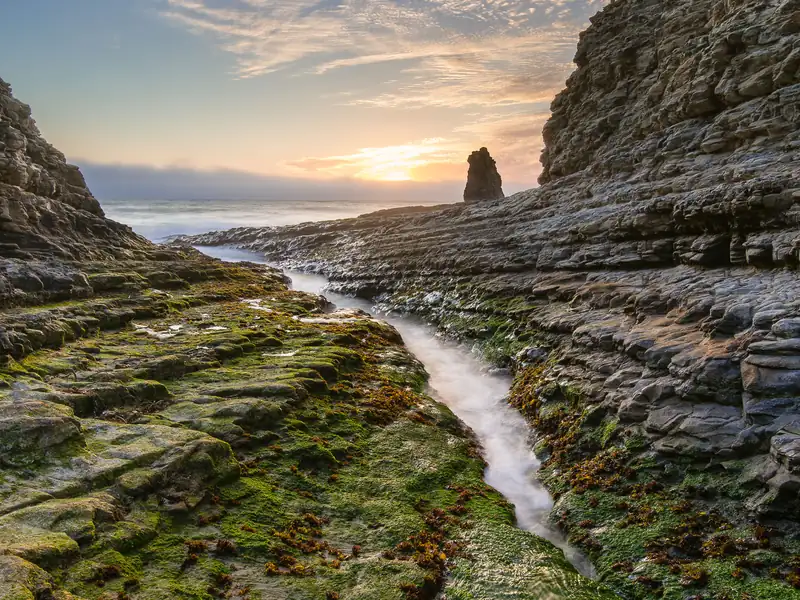
Nestled near Santa Cruz along California’s Central Coast lies Davenport Beach—a picturesque spot known for its multicolored sea glass deposits. The origin story here is unique: during a flood in the 1970s, waste from Lundberg Studios was swept into nearby waters. As a result, vibrant pieces of art-glass remnants now dot this beach.
Davenport Beach also boasts dramatic cliffs and secluded coves that make it an ideal location for photography enthusiasts and adventurous beachcombers alike. However, visitors should exercise caution due to strong currents in this area.
Tips for Visiting:
- Visit after heavy rains or storms for fresh finds.
- Check tide schedules before heading out; low tide offers safer access.
- Be cautious around slippery rocks and strong waves.
3. Sand City Beach
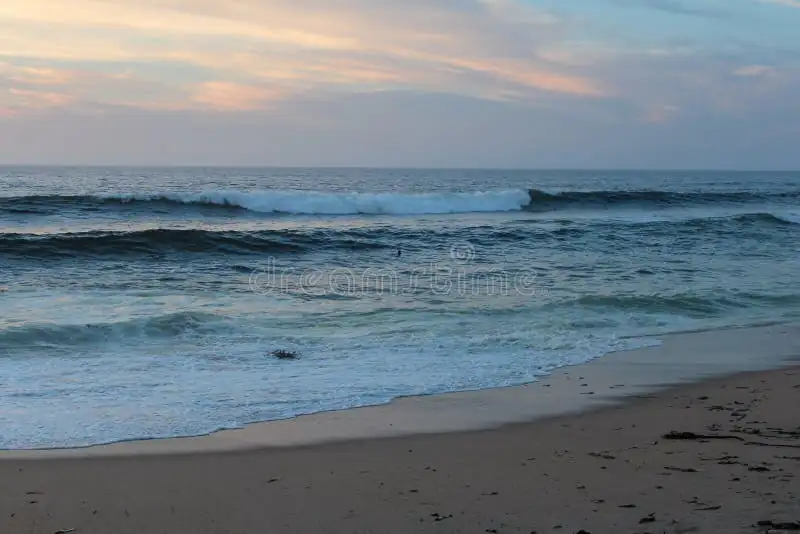
Situated in Monterey County near the town of Sand City, this beach offers a serene escape with its scenic sand dunes and abundant green and brown sea glass pieces scattered along its shores. While not as famous as Fort Bragg or Davenport Beach, Sand City Beach provides an excellent opportunity for quiet exploration away from large crowds.
In addition to hunting for sea glass, visitors can enjoy nearby attractions like the Monterey Bay Aquarium or hiking trails that wind through coastal landscapes.
Tips for Visiting:
- Weekdays are less crowded compared to weekends.
- Parking is available at designated lots near the beach.
- Bring gloves if you plan on sifting through pebbles for hidden treasures.
4. Laguna Beach
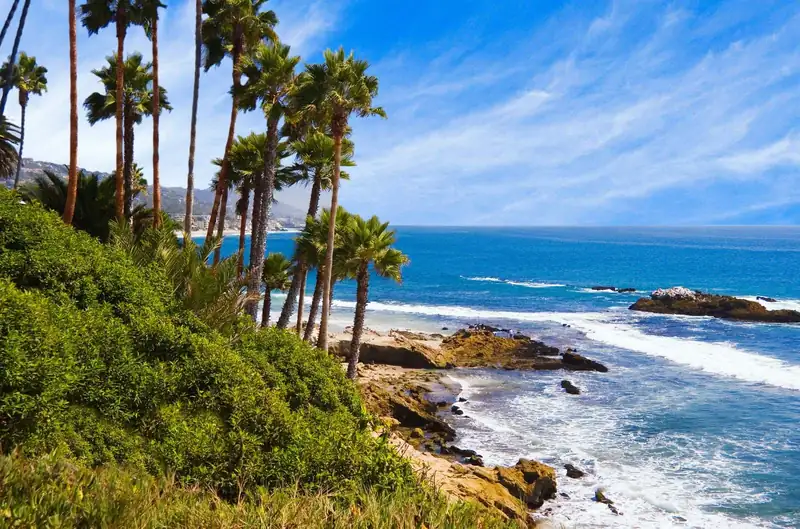
Laguna Beach, located in Orange County, is renowned for its stunning coastline, art galleries, and marine life. Among its many attractions are smaller coves where colorful sea glass can be found mixed with seashells. While the sea glass here tends to be smaller in size, its vibrant hues make it a favorite among beachcombers. Crystal Cove State Park, in particular, is a hotspot for sea glass enthusiasts due to its rocky areas and tide pools.
However, visitors should note that Laguna Beach is part of a Marine Protected Area (MPA), meaning collecting sea glass or any natural artifacts is prohibited. Instead, visitors are encouraged to enjoy the beauty of the beach responsibly by observing or photographing their finds.
Tips for Visiting:
- Explore rocky areas and tide pools for the best views of sea glass.
- Visit during low tide for easier access to hidden coves.
- Respect MPA regulations by leaving all natural treasures in place.
5. La Jolla Cove (Shell Beach)
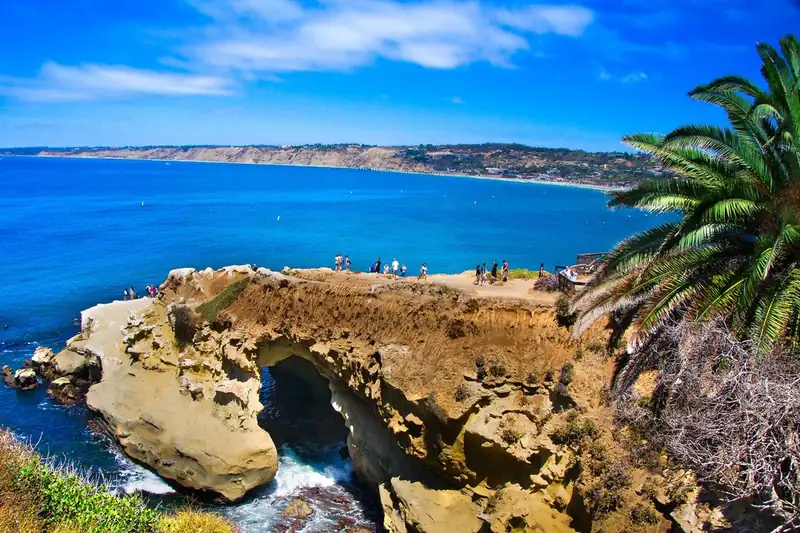
La Jolla Cove, situated in San Diego County, is a small yet picturesque beach known for its white, green, and aqua-colored sea glass. Shell Beach, a section of La Jolla Cove, offers a mix of sea glass and seashells along its shores. The beach’s rocky terrain and crystal-clear waters make it a popular destination for snorkeling and tide pooling as well.
Accessibility can be challenging due to slippery rocks and limited parking during peak hours, but the rewards are worth the effort. The serene atmosphere and unique finds make it a must-visit spot for collectors and nature lovers alike.
Tips for Visiting:
- Arrive early to secure parking and avoid crowds.
- Wear sturdy footwear to navigate slippery rocks safely.
- Check tide schedules for optimal beachcombing conditions.
6. Benicia Beach
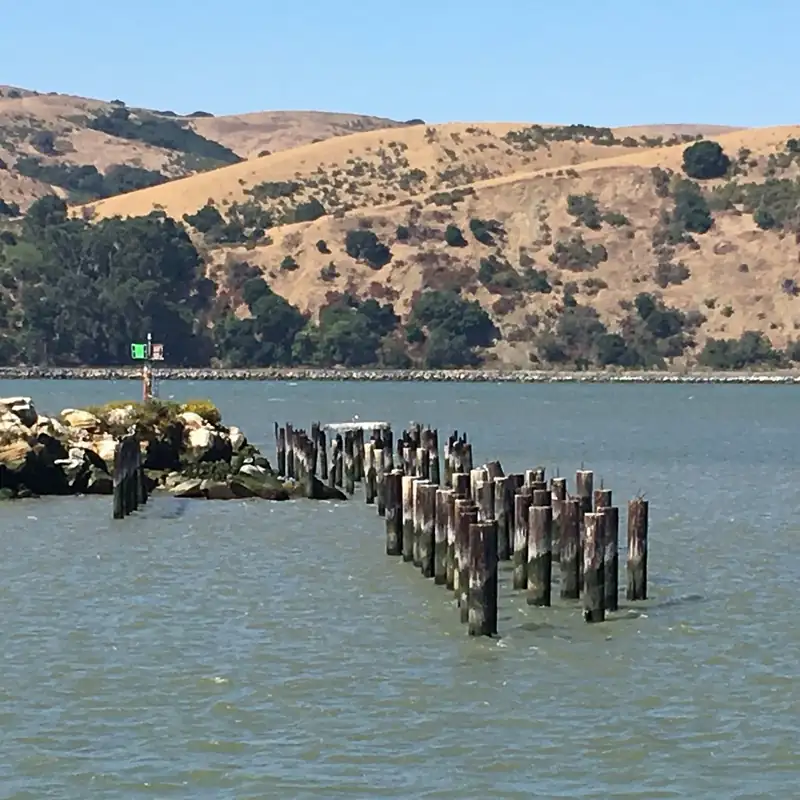
Benicia Beach is a lesser-known gem located in the San Francisco Bay Area. With an industrial history that contributed to its sea glass deposits, this beach offers a quieter alternative to more popular destinations like Fort Bragg or Davenport. The pieces found here are often smaller but still beautifully frosted and come in common colors like green, brown, and white.
The best time to visit Benicia Beach is early in the morning or after storms when new pieces are likely to have washed ashore. Its tranquil setting makes it an excellent spot for those seeking solitude while exploring California’s coastal treasures.
Tips for Visiting:
- Visit during early mornings or after storms for the best finds.
- Bring gloves and a small bag for collecting sea glass responsibly.
- Combine your trip with a visit to nearby historical landmarks in Benicia.
7. Crystal Cove State Park
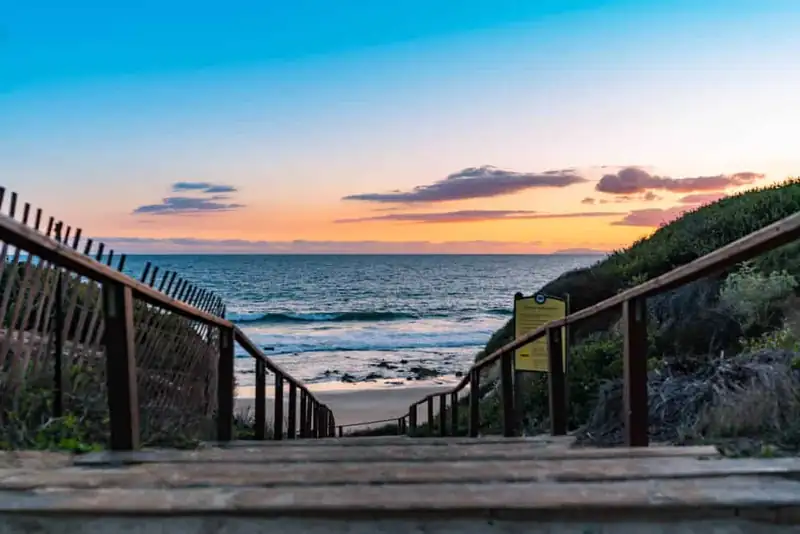
Crystal Cove State Park in Newport Beach offers sporadic but high-quality sea glass finds. The park’s pristine shoreline is influenced by tides and storms that occasionally deposit frosted shards among the sand and rocks. While not as abundant as other locations on this list, the pieces found here are often well-polished and of excellent quality.
In addition to sea glass hunting, visitors can explore tide pools teeming with marine life or hike along scenic coastal trails. The park’s natural beauty and diverse activities make it a favorite among outdoor enthusiasts.
Tips for Visiting:
- Check tide schedules before your visit; low tide increases your chances of finding sea glass.
- Respect park rules by leaving natural artifacts in place.
- Take advantage of nearby hiking trails for panoramic ocean views.
8. Point Reyes National Seashore
Point Reyes National Seashore is a remote and rugged destination that offers rare opportunities for finding sea glass. Its strong tides and limited accessibility contribute to the scarcity but high quality of pieces found along its beaches. This location is ideal for those who enjoy combining beachcombing with hiking, as trails like Tomales Point Trail offer breathtaking views of the coastline.
The isolation of Point Reyes adds to its charm, providing a peaceful escape from urban life. While the sea glass here may be harder to come by, the experience of exploring this unspoiled stretch of California’s coastline is unforgettable.
Tips for Visiting:
- Wear sturdy hiking shoes if you plan to explore nearby trails.
- Bring plenty of water and snacks, as amenities are limited.
- Be prepared for strong winds and cooler temperatures near the shore.
9. Moss Beach
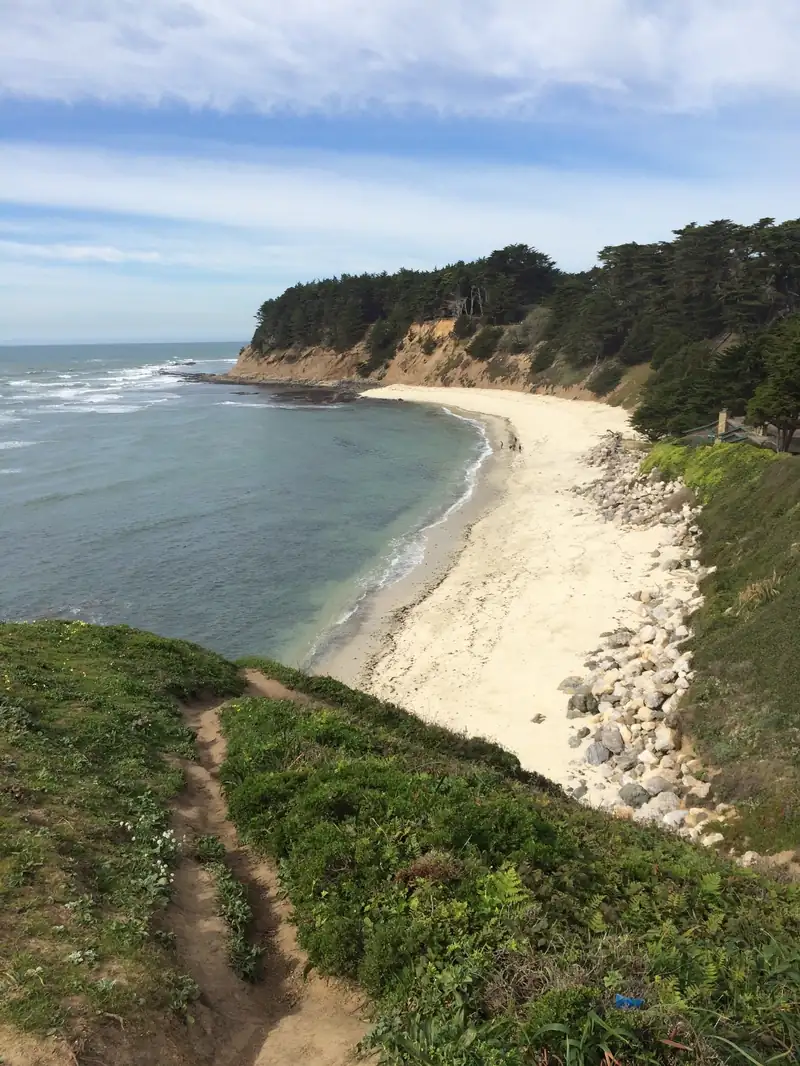
Located near Half Moon Bay, Moss Beach is known for its rocky shores that yield small but high-quality pieces of frosted sea glass. The beach’s proximity to tide pools makes it an excellent destination for marine life enthusiasts as well. While not as famous as Fort Bragg or Davenport Beach, Moss Beach offers a quieter experience with fewer crowds.
Visitors should focus on rocky areas where sea glass tends to accumulate. The combination of natural beauty and unique finds makes Moss Beach a hidden gem along California’s coastline.
Tips for Visiting:
- Visit during low tide when more sea glass is exposed.
- Explore nearby tide pools but tread carefully to avoid disturbing marine life.
- Bring gloves if you plan on sifting through rocks and pebbles.
10. Pacifica State Beach
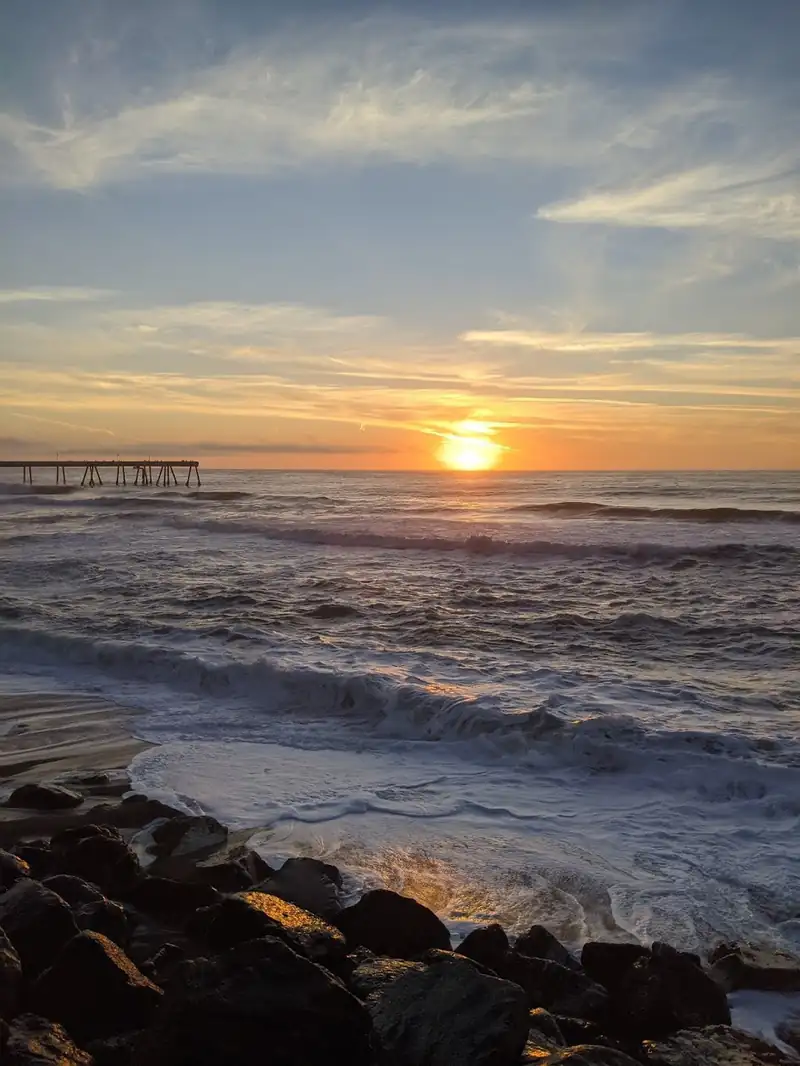
Pacifica State Beach, located just south of San Francisco, is a hidden gem for sea glass collectors. While not as abundant as other locations on this list, occasional finds after storms make it worth visiting. The beach’s scenic surroundings and laid-back atmosphere add to its appeal.
This spot is ideal for casual collectors or those looking to enjoy a relaxing day by the ocean. Its proximity to San Francisco also makes it an accessible option for city dwellers seeking a quick coastal getaway.
Tips for Visiting:
- Plan your visit after storms when fresh pieces are likely to wash ashore.
- Bring warm clothing as the area can be windy.
- Combine your trip with a visit to nearby attractions like Mori Point or Pacifica Pier.
How to Find Sea Glass Like a Pro
Finding sea glass requires patience, strategy, and an understanding of how ocean currents shape shorelines. Here are some expert tips:
- Timing is Key: Search during low tide or after storms when new pieces are churned up by waves.
- Focus on Rocky Areas: Sea glass tends to accumulate in rocky or pebbly zones rather than sandy beaches unless they have shell beds or estuaries nearby.
- Use Tools: Bring gloves to protect your hands from sharp objects, bags to collect your finds, and even a magnifying lens for closer inspection.
- Be Persistent: High-quality frosted pieces take time to find; don’t get discouraged if you don’t strike gold immediately.
By following these tips, you’ll maximize your chances of uncovering unique treasures while enjoying California’s stunning coastline responsibly.
Preserving the Beauty of Sea Glass Beaches
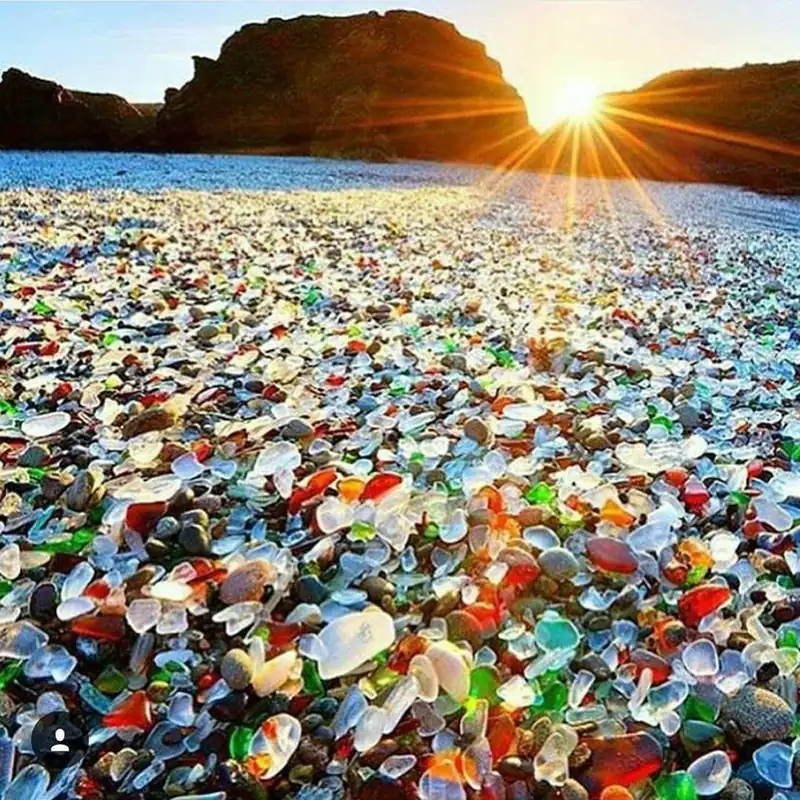
As interest in sea glass hunting grows, it’s essential to preserve these natural wonders for future generations:
- Follow Local Regulations: Avoid collecting from protected areas like Fort Bragg’s Glass Beach; instead, appreciate their beauty through observation or photography.
- Leave No Trace: Participate in clean-up efforts by picking up trash while beachcombing; this helps protect marine ecosystems.
- Educate Others: Share knowledge about sustainable practices with fellow visitors to promote responsible tourism.
By respecting these guidelines, we can ensure that California’s sea glass beaches remain vibrant and accessible treasures for years to come.
Conclusion
California’s coastline offers unparalleled opportunities for discovering sea glass—a testament to nature’s ability to transform discarded waste into objects of beauty. From iconic destinations like Fort Bragg Glass Beach to hidden gems like Moss Beach near Half Moon Bay, each location has its own story and charm.
As you explore these top 10 beaches, remember the importance of responsible tourism in preserving these fragile ecosystems. By leaving treasures behind for others to enjoy and participating in clean-up efforts, you contribute to the sustainability of these unique coastal environments.
So grab your gloves, check the tide charts, and embark on an unforgettable journey along California’s shores—where history meets artistry in every frosted shard of sea glass!
